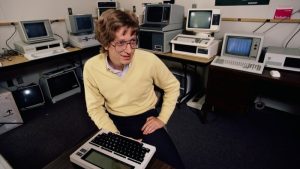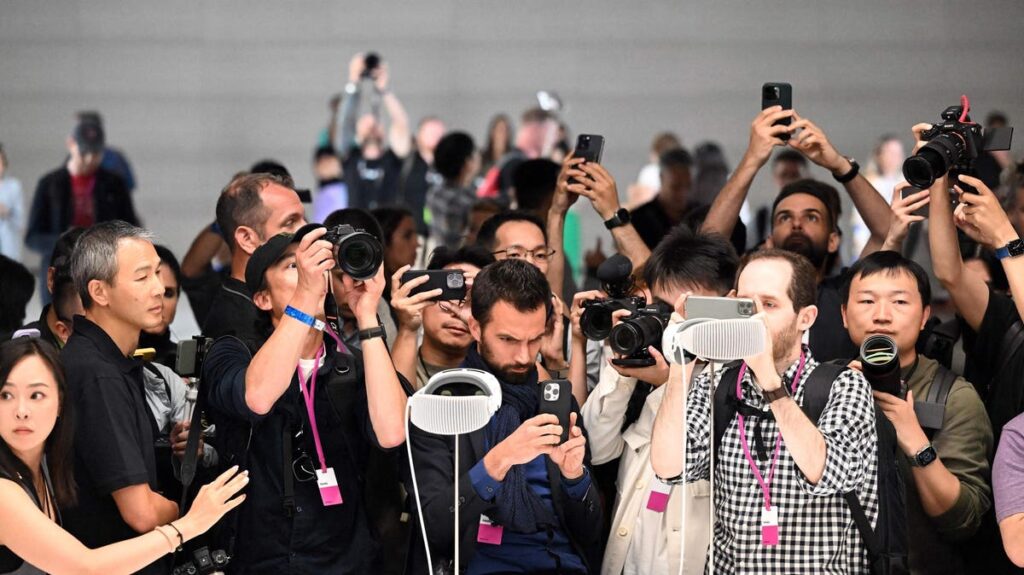Now that Apple
AAPL
Expensive? No.
Many observers were taken aback by the $3,499 launch price of the Apple’s new Vision Pro headset, especially when set against the $500 price of Meta’s Oculus, but it’s not really that expensive in historical context. It’s less expensive in real terms than the IBM
IBM
Me, for example. I remember showing up in San Francisco in the early 1980s and going to a downtown store — somewhere around Embarcadero if memory serves — to buy an Apple IIe. What I did use my amazing new $2,500 personal computer for? To play some games, of course, and to write a series of role playing game scenarios for D&D and Runequest. But mostly I used it for a variety of hacking experiments with a friend of mine. The transformational impact, though, came through the addition of a modem, a crude 300 baud opaque vision into the virtual world that I had only read about in William Gibson’s Neuromancer.
(I can still remember the frisson of excitement when I realised I could access a dial-in port and use the IIe as a terminal so that I could WORK FROM HOME, which I then did more than once).
One early reviewer said that his demo of Vision Pro was “the most mind-blowing moment of my 14-year career” covering the technology scene, which is a good description of how I felt when I went with a friend of mine who wanted to buy a Macintosh when it first came out and we unboxed and fired it up. Apple are again going to change the way we look at (and through) computers so perhaps it is best think about Apple’s new “spatial computer” (as Benedict Evans says) like the first Macintosh, which was more than $7,000 at today’s prices it launched and most people didn’t know why they needed one, but they knew that they wanted one.
One way to imagine AR/VR then, it is as applications that run on a spatial computer. Are customers demanding financial services in this emerging environment? I wouldn’t think so. Mike Storiale, VP for innovation development at Synchrony Financial Services points out that Palm Pilot users were not calling for a Blackberry, and Blackberry users were not dreaming about an iPhone. As he says, “the metaverse is chaotic now” but goes to suggest that’s not a bad thing as companies are exploring what they can do in it now as well as beginning to think about their longer-term strategies in the field.
Where does fintech come into these strategies? Well, financial institutions could develop new payment methods for the metaverse, such as consumer-focused wallets similar to those used for e-commerce, but with web3 at their heart. This approach would make consumer transactions as well as peer-to-peer payments easier, while maintaining the security and lower transaction costs that will make the metaverses more appealing transaction spaces, so fintechs could focus there. In addition to digital money, of course, the metaverses need digital identity to move beyond being mere virtual worlds and as Tracey Follows noted here in Forbes, Vision Pro uses biometrics in such a way as to cement the relationship between the user, the platform, their identity (and, in time, those wallets) but using iris biometrics, an obvious step up from FaceID.
The integration of identity means the ability to present verifiable credentials bound to the user will become a natural and inherent part of interactions in metaverses accessed through the Apple device. Very cool, if you ask me: Pop on the headset and pop in to (for example) an adult social mediaverse and the system will automatically check for and authenticate IS-OVER-18 and IS-A-PERSON credentials (and then accept the necessary payments in pseudonymous tokens with no need to dip out into the banking system).
Fintechs should see the Vision Pro as, in the words of the Financial Times, “statement of intent rather than an end in itself” and start thinking about where it might take us. It might be a few years before quantum computer contact lenses or biocomputer brain implants replace the headsets, cables and batteries but by that time Apple’s developer ecosystem will already have the applications that none of us knew that we wanted and all of us will naturally switch between the universe and the metaverses multiple times every day without even thinking about it.
Read the full article here













